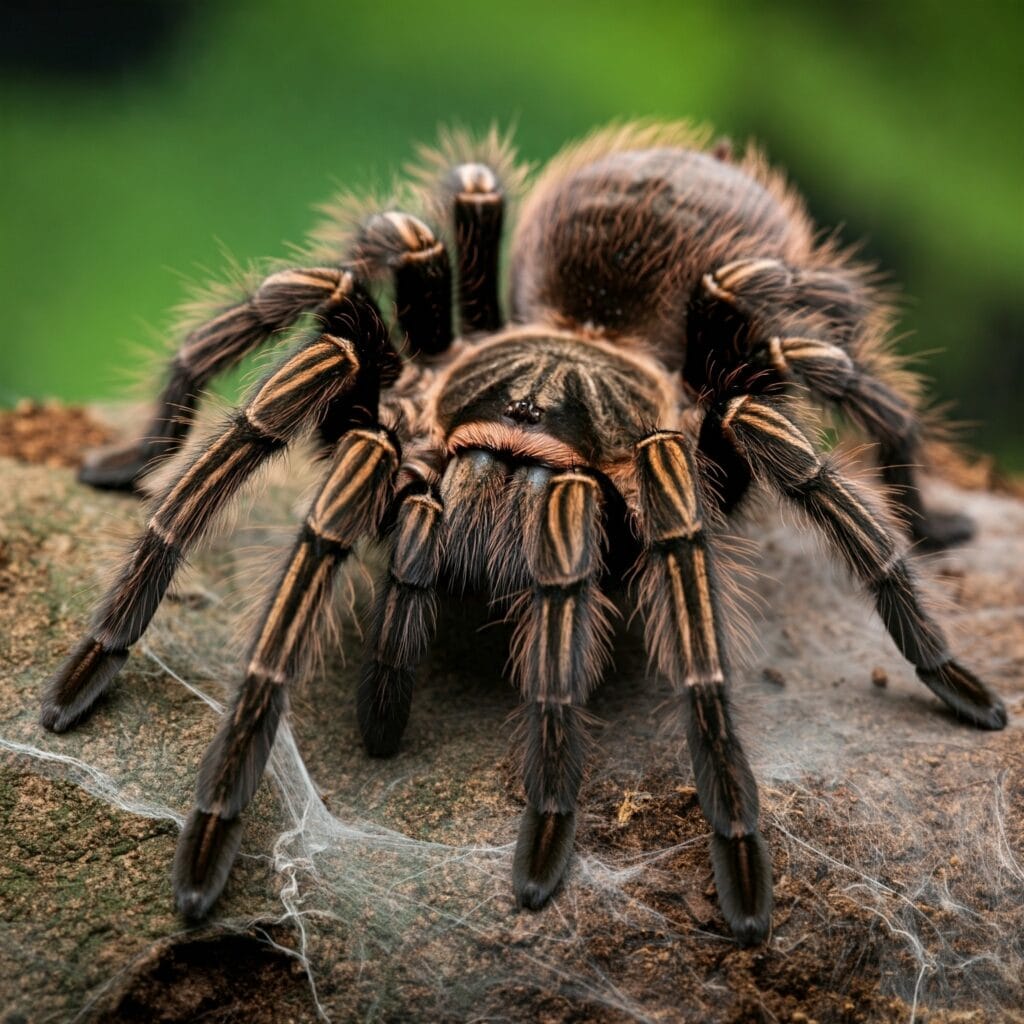Tarantula : the very name evokes images of large, hairy spiders lurking in shadowy corners. But these fascinating creatures are becoming increasingly popular as exotic pets, captivating owners with their unique beauty and intriguing behaviors. This comprehensive guide will delve into the world of tarantulas, exploring different types, essential care tips, and some incredible facts about these eight-legged wonders.
Types of Tarantulas

With over 1,000 species found across the globe, tarantulas come in a stunning variety of colors, sizes, and temperaments. Here are a few popular choices for beginners:
- Chilean Rose Hair (Grammostola rosea): Docile and hardy, this species is a classic starter tarantula, known for its beautiful rose-gold hairs.
- Mexican Red Knee (Brachypelma hamorii): Strikingly beautiful with vibrant red markings on its legs, this tarantula is relatively calm and slow-moving.
- Curly Hair Tarantula (Brachypelma albopilosum): Covered in long, curly hairs, this species is known for its gentle nature and ease of care.
For more experienced keepers, options like the Goliath Birdeater (Theraphosa blondi) (the largest tarantula in the world!) or the vibrant Cobalt Blue Tarantula (Haplopelma lividum) offer exciting challenges. Want to learn more about setting up the perfect home for your eight-legged friend? Check out our guide on creating a thriving invertebrate terrarium.
Blue tarantulas
Blue tarantulas are a captivating species that enthrall with their striking appearance. Indeed, their vibrant blue coloration, a result of light refracting off specialized hairs, sets them apart from other tarantula species. Furthermore, these arachnids, typically docile in nature, make fascinating subjects for observation. However, it’s crucial to remember that, like all tarantulas, they possess venom. Therefore, handling should only be attempted by experienced keepers who understand the necessary precautions. Overall, blue tarantulas offer a unique and rewarding experience for those intrigued by the world of arachnids.
Tarantula Care 101
Providing a suitable habitat and proper care is crucial for your tarantula’s well-being. Here are some essential aspects:
- Enclosure: A secure terrarium with ample space is vital. Terrestrial species require more floor space, while arboreal species need vertical height for climbing.
- Substrate: Choose a substrate that retains moisture, such as coconut fiber or peat moss, to maintain humidity levels.
- Temperature and Humidity: Most tarantulas thrive in temperatures between 75-85°F (24-29°C) and humidity levels around 60-80%.
- Feeding: Tarantulas are carnivores, feasting on live insects like crickets, roaches, and mealworms. Offer prey items appropriate to your tarantula’s size.
- Water: Always provide a shallow water dish for drinking and to help maintain humidity.
Fascinating Tarantula Facts
- Defense Mechanisms: Tarantulas have unique ways to defend themselves. Some flick urticating hairs from their abdomen, causing irritation. Others may raise their front legs in a threat display.
- Molting: Tarantulas shed their exoskeleton as they grow, a process called molting. During this time, they are vulnerable and require extra care.
- Longevity: Female tarantulas can live for decades, with some species reaching over 20 years old!
- Silk Producers: While not all tarantulas build elaborate webs, they all produce silk for various purposes, such as lining their burrows, creating egg sacs, and even aiding in climbing.
Responsible Ownership
Firstly, remember that owning a tarantula is a long-term commitment. Therefore, always research the specific needs of the species you choose and ensure you can provide adequate care. Secondly, never handle your tarantula without proper knowledge and precautions, as their bites, while not usually life-threatening, can be painful.
Ultimately, by understanding their needs and appreciating their unique qualities, you can enjoy the rewarding experience of keeping these fascinating creatures as pets.
Want to learn more about caring for exotic pets? Explore our website, Exotic Pet Haven, for a wealth of information and guides on a variety of fascinating creatures!


5 thoughts on “Tarantula Guide: Types, Care, and Fascinating Facts”